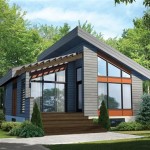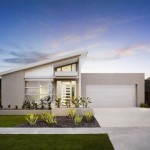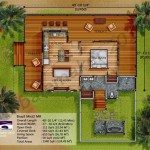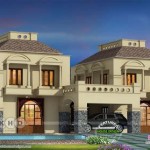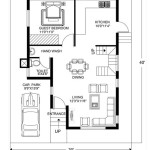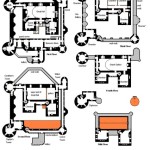Narrow House Plans With Garage In Front
Narrow lot sizes are a common feature in many urban and suburban areas, presenting a unique challenge for homeowners seeking ample living space. One popular solution to maximize space on a narrow lot is to incorporate a front-facing garage. This design allows for a deeper floor plan, pushing the living areas towards the rear of the property. This article explores the advantages, considerations, and design options available for narrow house plans with a front-facing garage.
One primary advantage of a front-facing garage on a narrow lot is the efficient use of space. By positioning the garage at the front, the remaining lot depth can be dedicated to the living areas, creating a more spacious feel than might be possible with a side-entry or detached garage. This setup can also facilitate a more private backyard area, ideal for relaxation and entertainment, as it is shielded from street noise and activity.
The improved privacy afforded by a front-facing garage extends beyond the backyard. By placing the primary living spaces towards the rear of the property, homeowners can create a buffer from the street, minimizing noise and visual distractions. This is particularly beneficial in densely populated areas where privacy can be a premium.
Another advantage of this design is the potential for enhanced curb appeal. A well-designed front-facing garage can become a focal point of the house's exterior, adding architectural interest and visual appeal. Integrating the garage seamlessly with the overall house design, through careful consideration of materials, colors, and landscaping, can significantly enhance the property's aesthetic value.
While there are several advantages to this design, there are also important considerations. One primary concern is the potential for the garage to dominate the facade. Careful design is crucial to avoid creating a house that looks like it is primarily a garage with living quarters attached. Architects often employ design strategies to minimize the visual impact of the garage door, such as using smaller garage doors, incorporating recessed entries, and strategically placing windows and landscaping elements.
Parking considerations also play a vital role in the design process. The driveway length and width need to be carefully calculated to ensure adequate space for maneuvering vehicles, especially in situations with limited street frontage. Designers often incorporate specific landscaping or hardscaping features to delineate the driveway and enhance its functionality.
Maximizing natural light can be a challenge in narrow house plans. With the garage occupying the front of the house, designers need to creatively incorporate windows and skylights to ensure adequate natural light penetration into the living spaces. Strategies such as open floor plans, light wells, and clerestory windows can help distribute natural light effectively throughout the home.
Several design options are available for narrow house plans with front-facing garages. Two-story designs are a popular choice, allowing for maximum square footage within a limited footprint. The upper floor can often accommodate bedrooms and bathrooms, while the lower floor houses the living areas and garage. This configuration creates a clear separation between public and private spaces.
Split-level designs are another option, offering a unique approach to maximizing space on a narrow lot. These designs often stagger the floor levels, creating distinct zones for different activities. This can enhance privacy and provide a more dynamic living experience.
Modern and contemporary architectural styles are often well-suited to narrow house plans with front-facing garages. These styles typically feature clean lines, simple forms, and large windows, all of which can help to create a sense of spaciousness and enhance the aesthetic appeal of the home. Materials such as concrete, steel, and glass can further contribute to the modern aesthetic.
Traditional architectural styles can also be adapted to narrow lot designs. Key considerations include maintaining a balanced facade, proportionally scaling architectural details, and carefully selecting materials that complement the overall design. Features such as dormers, gables, and covered porches can add charm and character to traditional narrow houses.
Landscaping plays a crucial role in softening the visual impact of the garage and enhancing the curb appeal of the home. Strategically placed trees, shrubs, and flower beds can help to frame the house and create a welcoming entrance. Vertical landscaping, such as green walls or trellises, can be particularly effective in maximizing space and adding visual interest.
Proper ventilation is an essential consideration in any home design, but it is particularly important in houses with attached garages. Building codes often mandate specific ventilation requirements to prevent the buildup of harmful fumes from vehicles. Designers incorporate mechanical ventilation systems and ensure adequate airflow between the garage and the living spaces.
Finally, consulting with an experienced architect is highly recommended when designing a narrow house with a front-facing garage. An architect can help navigate the complexities of designing for a narrow lot, ensuring that the final design meets the homeowner's specific needs and complies with local building codes and regulations. Their expertise can help maximize space utilization, optimize natural light, and create a functional and aesthetically pleasing home.

20 Luxury Narrow House Plans With Front Garage Images Small Traditional Plan

Narrow Home Plans With A Front Garage Dfd House Blog

Simple Narrow Lot House Plans Houseplans Blog Com

Narrow House Plans Lot Ranch Style

Morning Star Farm House Plan Narrow Archival Designs

Pin En House Plans

Narrow Lot With Front Garages

Budget Friendly Narrow Lot House Plan

House Plan 3 Bedrooms 2 5 Bathrooms Garage 3877 V1 Drummond Plans

Simple Narrow Lot House Plans Houseplans Blog Com


